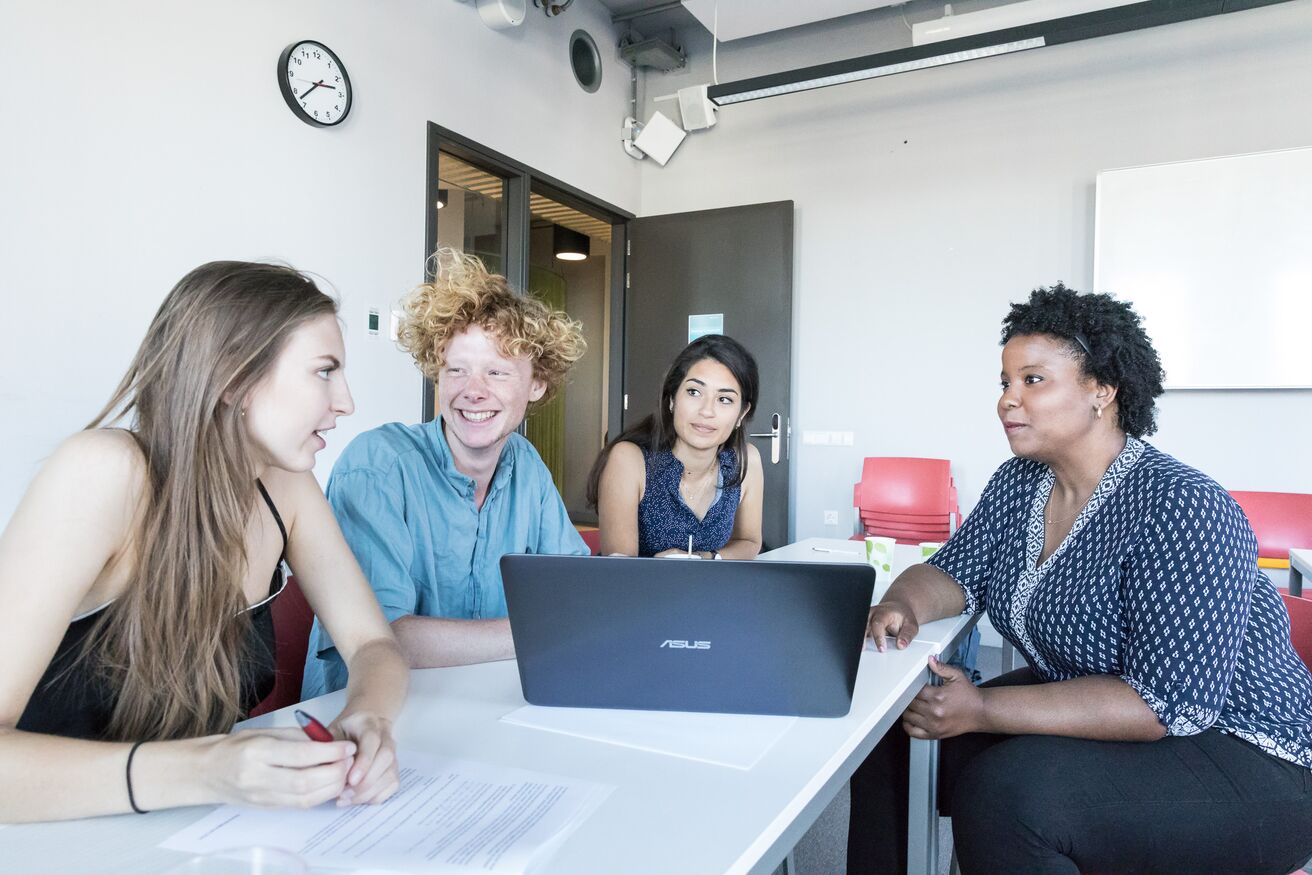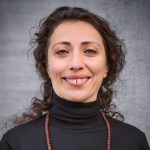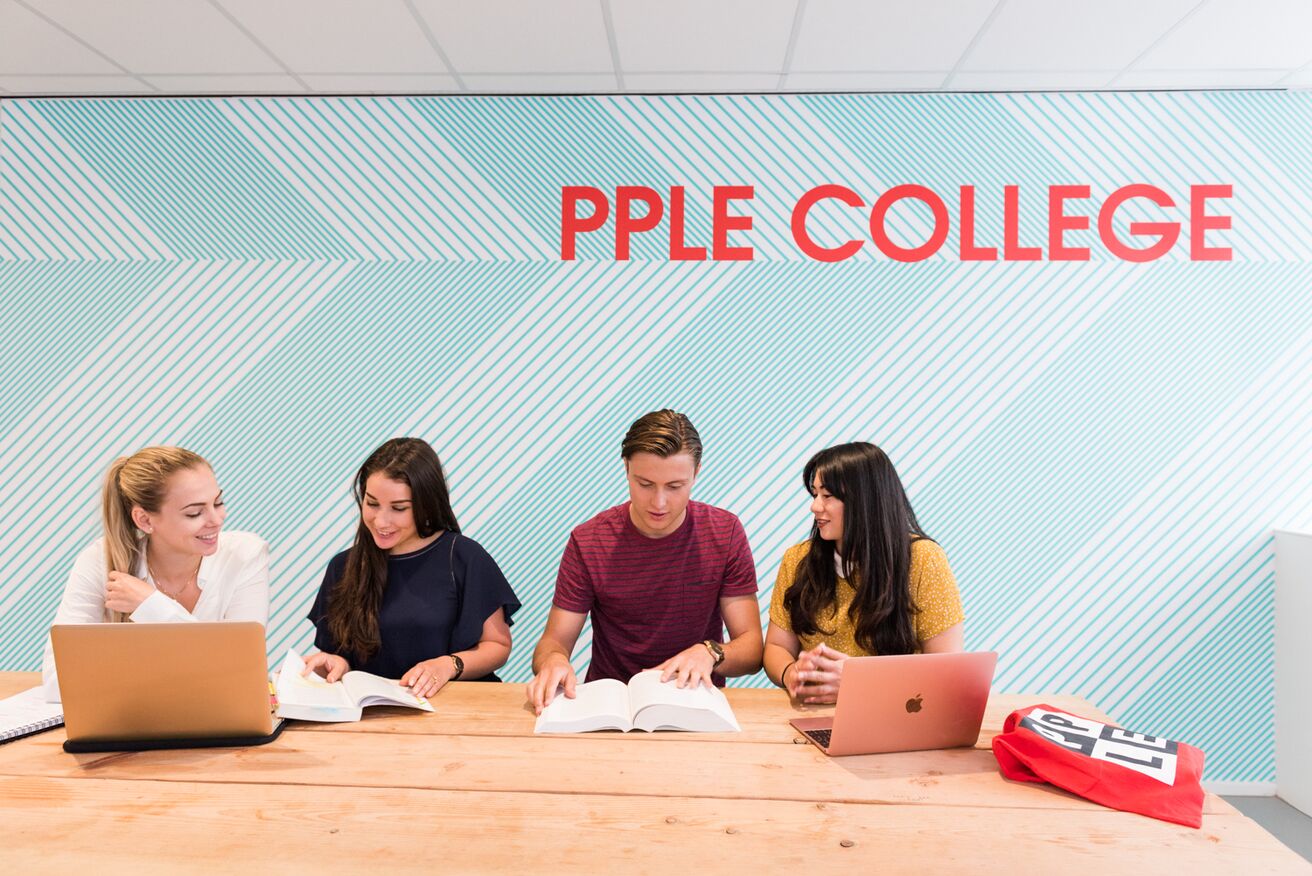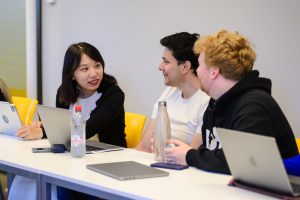
A search for best practices of knowledge sharing among students from different disciplinary and methodological backgrounds

They specifically focused on the context of designing an interdisciplinary research project. As a result, they discovered the added value of team teaching by educators and panel discussions among students. But also how important group dynamics and students’ trust is in tutorial groups. In the process, Lela also discovered the need to teach students how to cooperate with others.
Learn about Lela’s development process and their experience of the TLC Didactic Innovation grant
Read their detailed and interesting story below. Lela’s experience of the grant and their tips for other edcuators/grant holders, can be read in the drop-down menu at the bottom of this page.
Diverse levels of research methods knowledge
“I wanted to tackle an educational problem that I noticed for a while. I co-ordinate and teach a mandatory course in methods that is taught right before the thesis in the PPLE interdisciplinary honours programme. Since PPLE has four majors, Politics, Psychology, Law and Economics, students received very different methods training in their majors. This creates an uneven situation in terms of students’ backgrounds when students come to my methods class. And it creates a problem to provide content that is equally interesting for a diverse group coming from their own disciplines. There are even jokes in our programme about the different levels of methods in the majors, that for example the lawyers know nothing about statistics.”

Deep dive into the literature and interviewing colleagues
“What I requested with this grant was to find out which are the best practices in these situations with students from different disciplinary backgrounds. My main question was: how can we facilitate knowledge sharing? The second step was how to make it applicable to this particular course I teach, in a way that it is equally interesting and challenging for everyone. So my main objectives were firstly to identify the essential skills and competencies for successful interdisciplinary knowledge sharing practices. Secondly to design corresponding learning activities and assessment tools for PPLE.”
“This grant allowed me to dive deep into the literature written on this topic. So I spend many hours on literature review finding what solutions can be found in the literature and thought about how to translate this to our programme. I also wanted to talk to other teachers from the PPLE staff who were involved as tutors in my course. I wanted to know their thoughts on how to facilitate knowledge sharing and what type of interdisciplinary knowledge they think is necessary for our programme.”
Team teaching
“In the literature I found that team teaching is one of the best examples to actually teach interdisciplinary. Within an interfaculty teaching team the different teachers bring in their different perspectives. However, team teaching is not the norm. So one of my interventions was that I tried to set up such an experiment, and that was the biggest change and very exciting. I organized weekly meetings with the team, preparing meetings before the course started.”
Once the course was running, we held shorter meetings with the whole team. This course is taught by 12 different teachers. I was very nervous for the 1st team meeting, since colleagues were not used to team teaching, and I was asking them to leave their comfort zones. I didn’t want to bring more pressure on the teachers, who are already under a lot of pressure. During the first meeting I encountered some resistance that made me more nervous. But the resistance changed gradually after a few meetings.”
“We found ourselves like students again. Trying to find the common grounds, trying to understand each other’s points of view and how to teach from there. In the end everybody was quite enthusiastic so we will keep the team teaching. Now that we are fully back on campus, we will need to make smaller teaching teams of two to three teachers, because that is logistically easier. I will continue to do more research on how it works to design team teaching.”
Tutorial groups and panel discussions
“In our program, we have small tutorial groups of fifteen students, which are led by one tutor. We created composite classes that brought three to four tutorial groups together from different majors. In the beginning of every class there was an online panel discussion, where each tutor expressed their own view on the topic of the day. It was a panel format like we see on academic conferences. It was not scripted, but based on questions students wanted to address, so that created a natural discussion. It was something new where we got to know each other better and could tap into difficult topics. There was space to share that we disagreed on some theories, to show that coming from different disciplines may have different approaches. It showed the importance of formulating good research questions.”
“I think these panel discussions were a positive experience for everyone and very interesting for both teachers as students. One of my colleagues said that the panel set up first felt uncomfortable, but then turned out to work very well. As we progressed through the course, the panels got more substantial. The questions posed got some resistance sometimes, but the experience overall was positive. The complete teaching team therefore wanted to keep the panel discussions, since they attribute so much to the interdisciplinarity. We started working with guest lecturers as well to talk about the content that is given. For the panel discussions we invited four different teachers to talk about the lecture. We did notice that students do tend to ask their questions to the specific teacher of their own discipline. So students in my group working on legal questions, would ask to law methods teachers.”
Teach the value of collaboration
“We also created, instead of separate assignments per tutorial group, one long collaborative assignment. In the team teaching we came up with the idea to change the individual proposal to a group proposal and worked on peer review on each group, so the different groups peer reviewed each other. We let students practice collaborative writing and supported them to combine individual writing and integrate it into the collective one. Students remained in the same interdisciplinary teams for seven weeks, which created trust in the groups. But in some exceptional cases, there was a trust problem. So some groups were struggling in the beginning. It is not easy to work together in an interdisciplinary team, because members often speak their ‘disciplinary language’. That may cause some frustration at first. But I think it is very important to teach students the value of collaboration, and to practice it, since in science and academia we need to collaborate.”
Group dynamics and trust
“The literature review brought me some surprising outcomes that I would not have thought of within my knowledge. Like group dynamics emerged to be very important. If there is no trust among team members, then there is no ground for equally sharing knowledge. It is very important to prevent students to close themselves for each other, so they can equally contribute with their knowledge. So we need to address the issue of trust in group work and we did. For example, one group did regular check-in sessions, expressing personal experiences on the group dynamics. For them it helped to create trust and a bond which led to better collaboration. Teams were created in a way to ensure that members were coming from different majors.”
“The first day the students negotiated their roles. We provided them with the rules for the group work. We teachers didn’t interfere. It was up to the group to regulate their own work. After two weeks we did introduce a listening exercise, where every student could share how they felt within the group, where the others just listened without comments. Each student spoke out, it was just sharing their experience, nobody was supposed to solve the ‘problems’ nor discuss them. It could simply be. This is a technique that comes from the non-violent communication approach by psychologist Marshall Rosenberg. After that, we discussed trust in general. From what I heard back from the students they valued and appreciated it.”
Lela’s experience of the grant and tips for other educators/grant holders
“The call for the grant was June 2021 and the project started in September 2021. It lasted one academic year till June 2022. I got 80 standard hours including the research and peer consultations. We met on a regular base in peer review sessions with other teachers who received the same grant for their projects and shared how it was going and we presented the outcomes. It gave a sense of community. We structured our feedback, we observed each other’s projects, so this created a little bit of positive peer pressure and made us accountable.”
“The grant made it possible to find a way to teach methods in an interdisciplinary way. I initiated to implement tutorial groups and working with students from different majors in a group. I also initiated working with interdisciplinary teaching teams. These initiatives overall led to a higher quality of interdisciplinarity in the paper and thesis proposals from the students. Since we also worked on teambuilding the power of the group dynamic was more elaborate. So it delivered what I hoped for and also raised more questions. I would like to research more on how to facilitate the group dynamics of students, not just facilitate the content sharing. If a student-team does not work, we as teachers must have tools to improve the group dynamic, to work on how to help students bond better. I would like to research more on what are the best ways to work on such bonding process.”
“My two most important pieces of advice are to document and reflect on the research as it progresses, and to reach out and speak about it with colleagues. To keep documenting the process of conducting the educational intervention was important to me. Often when we are immersed into teaching, we forget to reflect and take a step to consider what lessons we learned or how others can adopt them. Keeping a (digital) journal, where one makes notes about the process, can be invaluable.”
“Also, don’t fear reaching out to colleagues, proactively emailing, and seeking meetings. Being a recipient of this grant, taught me to speak more openly about the problems I face in my teaching and seek advice from colleagues. We are in this together. One of the strengths of such grants is that it enables the formation of a community of teachers, where witnessing each other’s work can inspire and empower.”
More information on Lela Mosemghvdlishvili (they/them)
Dr. Lela Mosemghvdlishvili (cum laude MSc., cum laude B.A.) have fifteen years of experience in teaching and mentoring undergraduate students. Currently, they combine research into contemplative pedagogy as Education Research Fellow at the University of Amsterdam with course design and academic skills coordination at the interdisciplinary honors program PPLE. Alongside academic work, Lela is a student of wisdom traditions and regularly spends time in silent retreats for introspection and practice. Their background is in technology studies and communication sciences. They obtained a doctoral degree for an interdisciplinary manuscript, Politics of Mobile Code: Possibilities and Limitations of Writing Software for Smartphones, at the Erasmus University Rotterdam.
Also see:
Lela Mosemghvdlishvili are also teaching the course ‘Designing contemplative learning in higher education’ at TLC.






